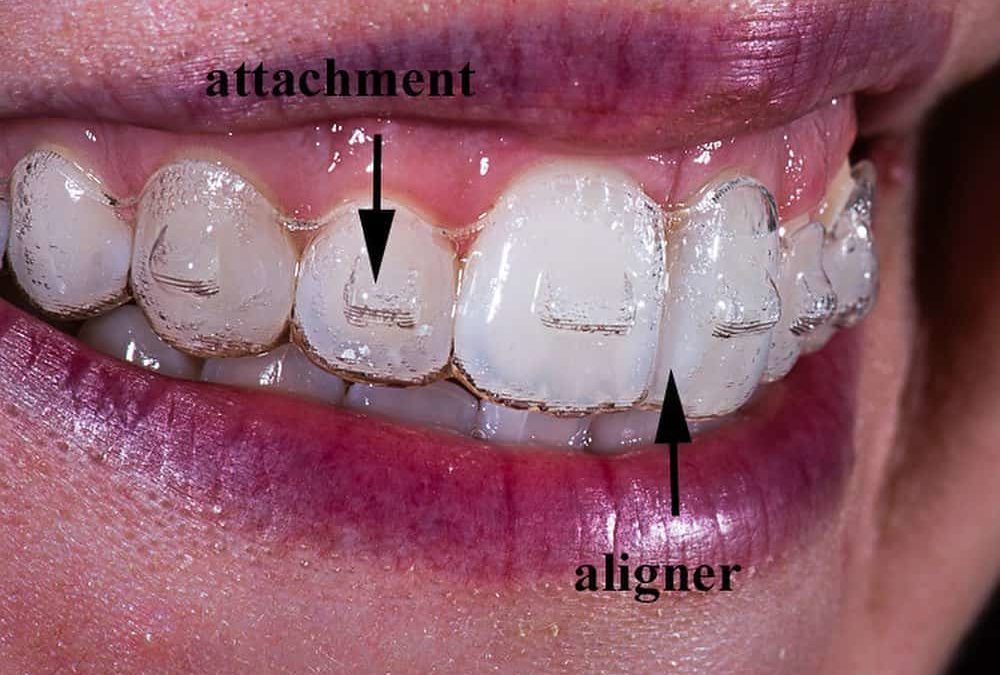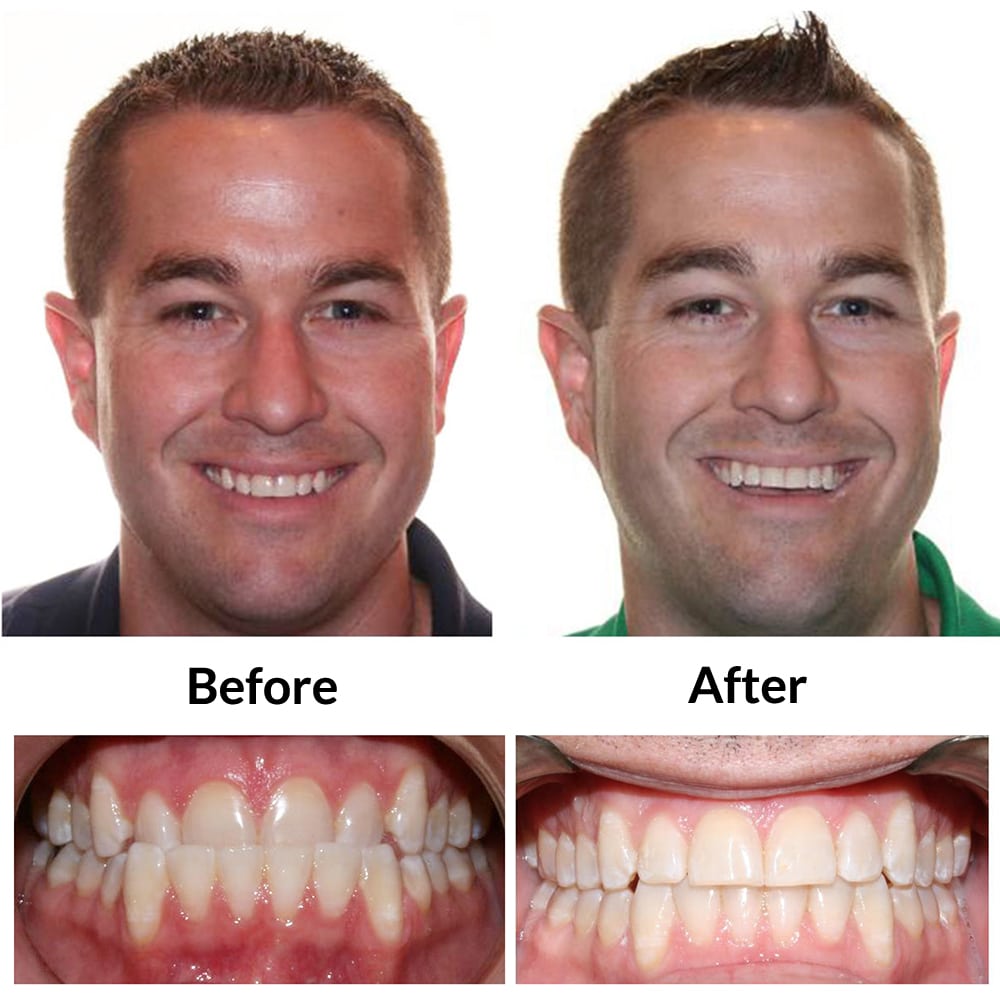Invisalign vs. Conventional Braces: Which Alternative Is Right for You?
When considering orthodontic treatment, the option between Invisalign and conventional braces presents numerous vital variables that warrant cautious analysis. Invisalign provides a discreet option with removable aligners, while standard dental braces offer a much more noticeable yet efficient remedy for serious imbalance. Each option includes distinct advantages and drawbacks related to aesthetic appeals, convenience, therapy duration, and price. Recognizing these subtleties is important for making a notified choice that lines up with your personal choices and way of living. The concern continues to be: which option will finest meet your orthodontic requirements and assumptions?
Introduction of Therapy Choices

On the other hand, traditional dental braces include steel braces and cables that are adhered to the teeth. This method uses continual stress with time to attain placement. While effective for intricate orthodontic issues, typical dental braces need routine check outs for changes and can position obstacles in maintaining dental health because of the difficulty of cleansing about braces and cords.
Both alternatives have their qualities, and the option typically depends upon details oral conditions, lifestyle choices, and patient conformity. Inevitably, speaking with an orthodontic specialist is critical for determining the most appropriate treatment plan customized to specific demands. Comprehending the nuances of each choice can considerably affect the general success of orthodontic treatment.
Aesthetic Factors To Consider
A considerable variable influencing the selection between Invisalign and conventional braces is the aesthetic allure each treatment offers. Invisalign aligners are crafted from clear plastic, making them practically unseen when put on. This discreet appearance is particularly appealing to adults and teens that may feel uncomfortable regarding their orthodontic treatment. The ability to keep a natural smile throughout the placement procedure can substantially enhance the patient's confidence in professional and social settings.
On the other hand, typical dental braces include steel brackets and cables, which can be more obvious. While advancements in orthodontic technology have caused the growth of smaller sized braces and colored elastics, traditional dental braces still preserve a more conspicuous account. For some people, the exposure of braces might prevent them from seeking necessary therapy.
Inevitably, the selection between Invisalign and typical dental braces might rest on individual preferences relating to aesthetics. Patients that prioritize discernment usually favor Invisalign, while those who are less worried concerning exposure may choose conventional dental braces. Comprehending the aesthetic implications of each option is vital for making a notified decision that aligns with one's lifestyle and preferences.
Convenience and Convenience

In regards to convenience, Invisalign aligners are detachable, enabling people to enjoy their preferred foods without limitation and preserve ideal oral hygiene. Brushing and flossing are streamlined, as the aligners can be secured during these routines, whereas typical braces need cautious steering around cords and brackets.
In comparison, typical dental braces require normal modifications, making them less practical for those with busy timetables. In general, the convenience and convenience of Invisalign make it an appealing choice for lots of individuals looking for orthodontic therapy.
Therapy Duration and Efficiency
While both Invisalign and standard braces are efficient in remedying oral misalignments, the period of therapy can differ considerably between both choices. Generally, Invisalign treatment can take anywhere from 12 to 18 months, depending on the intricacy of the situation. The clear aligners work by gradually moving teeth into their desired placements, and normal follow-ups with an orthodontist help make certain progression remains on track.
On look these up the other hand, standard dental braces typically need a longer commitment, usually varying from 18 months to three years. This is because of their set nature and using brackets and cables, which can be more efficient for serious imbalances and complex instances (Invisalign). The therapy efficiency of typical dental braces is well-documented, as they enable exact modifications and better control over tooth movement
Ultimately, the selection between Invisalign and conventional braces might rest on both the anticipated therapy period and the details dental issues handy. Consulting with an orthodontist is critical, as they can give tailored recommendations based upon specific needs, guaranteeing the chosen method aligns with desired outcomes and durations.
Price Comparison and Insurance Options
Price plays a substantial duty in the decision-making procedure for people taking into consideration orthodontic treatment, whether going with Invisalign or conventional dental braces. Typically, the expense of Invisalign ranges from $3,000 to $8,000, while conventional braces typically set you back between $2,000 and $6,000. Factors influencing these costs include the complexity of the case, the period of treatment, and geographical location.
Lots of dental insurance policy strategies offer partial coverage for orthodontic treatments, but the specifics can vary commonly. Normally, conventional dental braces may be much more regularly covered by insurance coverage plans contrasted to Invisalign, which some insurance providers classify as a cosmetic treatment.
Furthermore, several orthodontic methods provide flexible payment strategies, making both treatment options much more obtainable. Clients need to ask about possible financing options and discounts for upfront payments. Reviewing the overall price, hop over to here consisting of insurance coverage advantages and layaway plan, is necessary for making an informed choice that lines up with both aesthetic choices and spending plan factors to consider.

Verdict
In summary, the option between Invisalign and standard dental braces rests on multiple factors, consisting of aesthetic preferences, convenience, treatment duration, and cost. Invisalign offers a very discreet, removable alternative that promotes oral hygiene and dietary flexibility, while standard dental braces might be much more appropriate for complex dental issues and commonly come with a lower price point. Ultimately, consultation with an orthodontist is important to analyze individual conditions and identify the most appropriate therapy option for accomplishing optimum dental placement.
When considering orthodontic therapy, the choice between Invisalign and typical dental braces presents a number of important factors that warrant mindful assessment.Comparing Invisalign and standard dental braces discloses distinct treatment Discover More Here choices for orthodontic modification.While both Invisalign and typical braces are efficient in dealing with oral imbalances, the duration of treatment can differ considerably in between the 2 options.Price plays a significant role in the decision-making process for people taking into consideration orthodontic therapy, whether choosing for Invisalign or conventional dental braces.In summary, the choice in between Invisalign and standard dental braces hinges on numerous elements, including visual choices, comfort, therapy duration, and price.